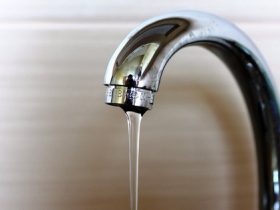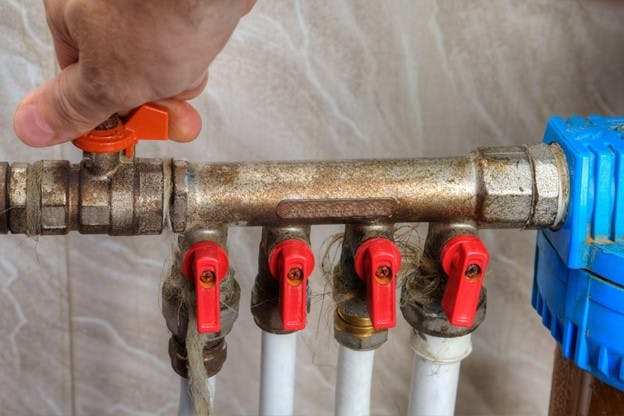Easy Actions to Increase Low Water Pressure in Your Home
Easy Actions to Increase Low Water Pressure in Your Home
Blog Article
What're your opinions on 10 Reasons for Low Water Pressure in Your House?

Low tide stress in your home can be a frustrating problem, influencing everything from bathing to cleaning dishes. If you're experiencing weak water circulation, there are numerous possible reasons and options to explore. In this guide, we'll discuss usual factors for low water stress and useful steps to resolve the concern effectively.
Introduction to Low Tide Stress
Low water pressure happens when the circulation of water from your taps, showers, and various other components is weak than usual. This can make daily tasks a lot more challenging and much less reliable. Understanding the reasons for low tide pressure is crucial to finding the best service.
Common Reasons For Low Tide Pressure
Faulty Stress Regulators
Stress regulatory authorities are responsible for maintaining regular water pressure in your home. If they malfunction, it can result in low tide pressure or unequal flow throughout your home.
Community Supply Of Water Issues
In some cases, the issue exists outside your home. Municipal water issues, such as main line leaks or maintenance work, can temporarily minimize water pressure in your location.
Pipeline Obstructions
In time, pipelines can become blocked with mineral deposits, debris, or particles, limiting the flow of water. This is a typical concern in older homes with galvanized steel pipelines.
Deterioration
Rust within pipes can lead to leakages and minimized water pressure. Corrosion accumulation can constrict water flow, specifically in maturing plumbing systems.
Exactly How to Identify Low Tide Stress
Inspecting Pipes
Inspect noticeable pipelines for indications of leakages, corrosion, or clogs. Pay attention to any kind of uncommon noises, such as knocking or rattling pipelines, which could suggest concerns within the plumbing system.
Consulting with a Plumber
If you're unable to identify the cause of low water pressure, think about employing an expert plumber to perform a thorough evaluation. They can determine underlying problems and suggest proper remedies.
Examining Faucets and Fixtures
Beginning by testing the water stress at various faucets and fixtures throughout your home. If the problem is isolated to specific locations, it may indicate localized troubles.
DIY Solutions to Fix Low Tide Stress
Flushing Water Heater
Sediment build-up in the water heater can restrict flow and reduce efficiency. Purging the container periodically aids get rid of debris and preserve ideal performance.
Inspecting Pressure Regulator
Make certain that the stress regulatory authority is operating appropriately. Readjusting or changing the regulator can help restore proper water stress throughout your home.
Cleaning Up Aerators and Showerheads
Mineral deposits can collect in aerators and showerheads, reducing water circulation. Remove and clean these elements regularly to boost water stress.
Clearing Up Clogs in Water Lines
For minor clogs, try making use of a plumbing serpent or chemical drain cleaner to clear obstructions in pipes. Be cautious when utilizing chemicals and comply with safety and security guidelines.
When to Call a Professional Plumber
If DIY efforts stop working to deal with the problem or if you presume substantial plumbing troubles, it's finest to seek help from a licensed plumber. They have the experience and devices to resolve complicated issues securely and properly.
Safety Nets to Maintain Water Pressure
Mounting a Stress Booster
Consider mounting a stress booster pump to improve water pressure in locations with continually low circulation. This can be particularly helpful for multi-story homes or residential properties with high-demand components.
Tracking Water Use
Bear in mind water use practices and stay clear of ill-using the plumbing system. Easy modifications, such as staggering showers and washing loads, can help preserve ample water stress.
Normal Upkeep
Arrange routine maintenance for your plumbing system to prevent concerns such as deterioration, leakages, and clogs. Attending to minor troubles early can aid prevent even more significant repair services later.
Final thought
Dealing with low water stress can be discouraging, but determining the underlying reasons and executing appropriate options can recover optimal flow throughout your home. Whether it's cleaning up aerators, evaluating pipes, or talking to a plumber, taking aggressive actions can make sure a steady supply of water for your daily needs.
HOW TO FIX LOW WATER PRESSURE IN YOUR HOUSE (EXPERT GUIDE)
The morning shower lacking any real pressure? Bathtub taking hours to fill? Or maybe you’re dissatisfied with the inadequate performance from your combi boiler?
Then you, like millions of others across the UK, might be experiencing low water pressure.
Fortunately, the good news is that you don’t have to continue living this way. The cause of low water pressure in the home is often quite simple, and you may not even require a plumber to fix the problem.
What causes low water pressure in the house?
If you are experiencing issues with water pressure throughout your home, then you may have one of the problems outlined below.
Most of these problems can be fixed quite easily, but for others, you may need to contact a plumber.
Obstructed Shutoff Valve
If you’ve just bought a new home or recently had building work conducted on your property, there is a chance that your water valves were not fully opened.
If the water valve is partially closed, then you may be restricting the amount of water entering your home. To fix this, simply ensure the valve is fully open.
If the valve appears fully open but you are still encountering reduced water pressure, then the valve may be broken. If this is the case, do not under any circumstances try to fix it without proper training.
Often found under your kitchen sink, a water valve will usually look like a bright yellow handle.
Again, if you believe the water valve is broken, contact a plumber immediately.
Leaks in Your Water Pipes
Leaks are the worst-case scenario when it comes to low water pressure.
If the water pipes are damaged, then this will cause low water pressure, as not all the water will make it to your taps.
After you’ve checked to see if the valve is fully open, you can conduct a leak check of your home. Now, this may seem scary, but it is actually quite simple.
Clogged Water Pipes
Clogged water pipes are one of the most common causes of low water pressure.
These clogs usually build-up when your home is supplied water via iron pipes. Iron is particularly vulnerable to rusting which can then break off and cause an obstruction within your system. You also face the problem of things like dirt, gravel or sand entering creating mineral deposits which further block water flowing from the mains water supply.
Unfortunately, if you suspect that clogged pipes may be restricting your water supply, then you will need to contact a plumber.
In this situation, you will either need to have your pipes removed and cleaned or in more severe cases, you could require a new set of water pipes.
Designer Taps
Designer taps look fantastic, but are they built to be efficient in your plumbing system? Modern taps are built for modern homes and they often have lower flow rates that are specifically designed for use within high-pressure systems.
Install a Water Pressure Booster Pump
If the issue is simply that the mains water pressure supply is too low, the simplest fix is to invest in a booster pump. Found in homes of all shapes and sizes, booster pumps are a relatively cheap option to add extra pressure to your home.
Designed to increase water pressure by passing water into the pump from your mains supply and then ejecting it into your home water system at a higher pressure, a booster pump is a truly simple and effective solution to increasing water pressure.
https://www.anchorpumps.com/blog/the-plumbers-guide-to-fixing-low-water-pressure/

We are very focused on and I am hoping you enjoyed reading the new article. If you please take the time to promote this blog if you appreciated it. Thank you so much for going through it.
Call Report this page